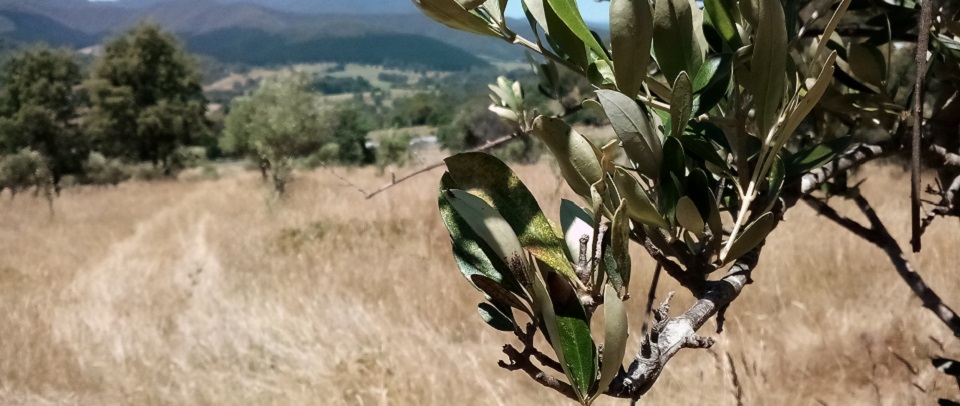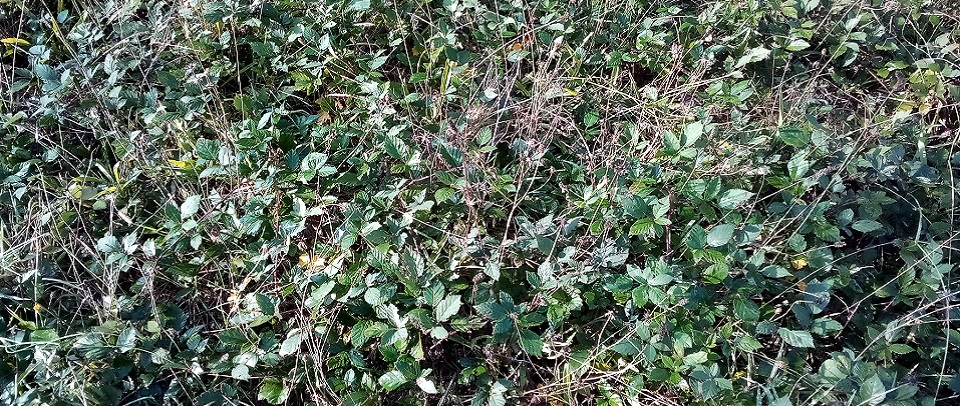Least favourite jobs
It depends what job I am doing as to what job I like the least, I've decided. Today I drove up and down between the olive trees, dressed in a bio-hazard suit complete with breathing mask, and spent the day spraying pyrethrum at lacebug colonies.
I hate that job.
To be fair, today wasn't so bad. I've done it on a hot day and the sealed suit over the top of my clothes heats up pretty fast. A couple of hours of that and I am drenched in sweat and ready to pass out.
Today was overcast, no sun, but no rain predicted. Good day for spraying.
I made the most of it and got 75% of the grove done. I only stopped because my leg started cramping. There's another two hours to go and I wasn't going to be able to last out the cramp.
We've had lacebug before, and it has been devastating. The lesson was learned, and now I can spot the distinctive leaf damage of a lacebug cluster from a moving vehicle. I load up the buggy with a 50 litre spray unit and drive up and down each row, both sides of each tree.
The majority of trees were clear, no visible damage. But lots needed attention. The lacebug run on a two week cycle so if the first group were undetected, the second wave is seriously bigger, and by the third or fourth wave the entire tree can be affected.
I did all this a couple of months ago and so have kept a lid on it. But I've been busy and not paying attention, and there were at least three trees where the lacebug had multiplied throughout the tree. So I probably missed them initially, and they've had a chance to duplicate uninterrupted. I only have a small spray unit, and its hard work getting to the top of the bigger trees. Even more reason to keep on top of the colonies.
So, I'm glad I've done it, but I was surprised how much there was, and I will need to do it again in a couple of weeks to make sure it's contained. The lacebug outbreaks are a sort of seasonal thing. There's a couple of orchards near me that also have lacebug infestations, but it doesn't look like they have done anything about it. That'll hurt.

Distinctive signs of lacebug....visible as a clump at the end of lower outlying branches. Distinctive mottled leaves, and 50/50 browned leaves. And tiny black specks, which are the lacebug themselves
The other spraying job I have been doing at intervals is blackberry spraying. That's less horrible, in that I use a heavy droplet nozzle, close to the ground, and not the fine aerosol mist that's needed to spray into the tree canopy. I don’t have to wear as heavy a load of protective gear for the blackberry spraying. And I pretty much don't have to get out of my buggy.
That's not actually a good thing. I don't have to get out, because there is so much blackberry to spray. In another year or two I'll be hunting stray plants, but at the moment the blackberries I am dealing with blanket the ground and I just drive and spray down.
When we moved here the local wisdom was "slash and spray" for blackberries. We didn't want to do that, for two reasons…I'm opposed to spraying poison as a solution, and I wasn't sure how the herbicides for blackberries would impact the trees.
So almost 7 years have gone by with us trying a range of blackberry eradication techniques. None of them have worked.
The least ineffective has been mowing them. "Mow them for 7 years and they will give up". Well, we have been doing that, and what we have done is naturally select blackberries that grow flat on the ground.

blanket coverage of pasture with blackberries
There were a series of steps that got me to the point I'm at now, of eradicating via herbicide.
One was the persistent failure of all the alternative techniques we tried. (One we never tried which I expect would be a positive result was grazing the blackberries with goats. I've seen what our Dorper sheep do to olive trees and am not foolish enough to let goats loose on them. )
The other was completing a safe chemicals handling certificate. TAFE-based skill training, it was a revelation.
The third was speaking with the course trainer about my particular issue, of blackberries within a valuable olive orchard. He had a solution in mind, so I came home and did some trials. I marked out a couple of spaces, and a few short rows that were heavily infested. After a couple of months it was clear it was working, which was pretty exciting.
There's not much satisfaction is spraying lacebug. If you get them they die on the spot. They stick to the leaf and dessicate. The dead and damaged leaves don't recover. From a distance, it looks the same as a live colony. You actually need to get up close with a jeweller's monacle and check them out. Whereas when you spray blackberries, they look the same…for a week or so. Then, over the next few weeks as the systemic poison kills the plant, they slowly yellow and die. In about three months they are as far gone as dry, brown bracken.
So, next year we will have lacebug again, and it will be up to me to keep on top of the population. But next year there will be less blackberries, and I will be chasing a thinning, dwindling population. It won't be another 7 years, but I am optimistic in five years most of them will be gone.
